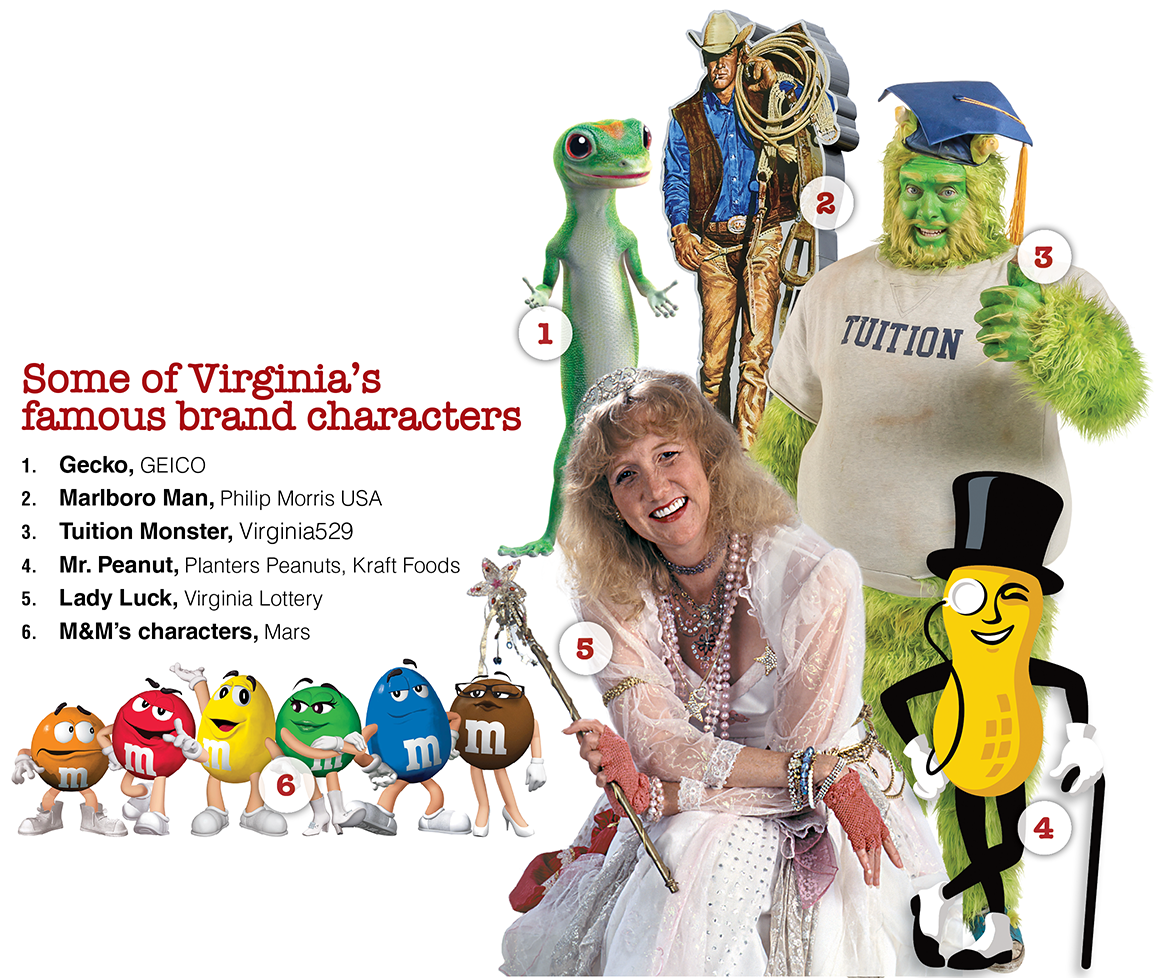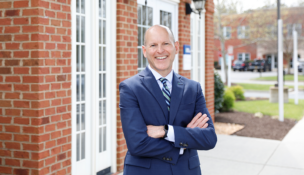Got brands?
Virginia is a hotbed for top products
Mars Inc. executive Andy Pharoah displays some of the company’s best-selling brands at the company’s headquarters in McLean. Photo by Mark Rhodes
Colorful. Crunchy. Sweet. There’s probably no candy in America more iconic than M&M’s. The hard-shell, chocolate candies debuted 76 years ago. At first, they were sold only to the U.S. military as part of soldiers’ food rations during World War II.
That’s a suitable beginning for a candy that the late Forrest Mars Sr. envisioned after observing soldiers in the Spanish Civil War. They ate small chocolates with a hard sugar coating that stood up well to heat.
Mars patented his own process for that type of candy, and the rest is history. When World War II ended in 1945, Mars Inc. rolled out M&M’s to the public.
By 1954 the candy maker added a peanut variety. That same year Mr. Plain and Mr. Peanut M&M’s began to appear in television commercials with a slogan that still resonates with many as a childhood memory: “Melts in your mouth, not in your hand.”
By 1956, M&M’s had become the No. 1 candy in the country. Today, it’s a billon-dollar brand available in a range of colors, fillings and flavors in more than 100 countries. This May brought another big launch: the release of Caramel M&M’s, the first with a soft and chewy center.
M&M’s is a billion dollar global brand — one of ten billion dollar brands in Mars’ food and pet-care businesses. The others include: Snickers, Twix, Orbit/Extra, Dove/Galaxy, Banfield, Pedigree, Whiskas and Royal Canin, and VCA Inc.
Mars is Virginia-based, operating from its corporate headquarters in McLean. The two-story, brown-brick building isn’t plush as headquarters go, but there is a tasty perk: free snacks, including a cold case in the reception area stocked with Mars ice-cream confections.
With so many big brands, it’s not surprising that the fourth-generation, family-owned business ranks as the sixth-largest private company in America, with $35 billion in annual sales and 85,000 employees in 80 countries.
Yet when it comes to winning brands, Mars has plenty of company in Virginia. From the macho Marlboro Man to a rambunctious group of Vikings who promoted Capital One credit cards, Virginia companies have a history of standout products and slogans.
In fact, according to one national ranking, the Old Dominion is home to 15 of the 500 most-valuable brands in the country. Philip Morris USA — which makes Marlboro cigarettes — Mars and Capital One Financial Corp. all made this year’s Brand Finance U.S 500 list along with Hilton Worldwide, Dollar Tree and CarMax. (See full list here.)
Adding to that distinction is the presence of a top-ranked advertising shop. The Martin Agency in Richmond is the creative force behind hugely successful branding campaigns, including the Geico ads and their promise that “15 minutes could save you 15 percent or more on car insurance.”
Martin & Woltz Inc., The Martin Agency’s predecessor, also came up with “Virginia is for Lovers,” the slogan of Virginia’s state tourism agency. The iconic catch phrase, created in 1969, remains in use today and is ranked by Forbes.com as one of the top 10 tourism brands of all time.
Virginia also is home to the No. 1 ranked graduate school in brand management, the Brandcenter at Virginia Commonwealth University. With so much homegrown talent, Virginia is proof that glam brands can originate from places other than New York’s Madison Avenue.
So what is the secret behind branding? How does it drive sales? And what is the role of social media in promoting today’s brands?
The art of storytelling
“Branding is all about storytelling,” says Andy Pharoah, vice president of corporate affairs and strategic initiatives for Mars. “You’ve got to engage with consumers and connect with them emotionally.”
At Mars, the branding starts with quality. “If you look back historically, brands were a guarantee of quality … So that is the first thing,” says Pharoah. “You know it may seem simple to have an M printed on every M&M. But when you have thousands of these candies crossing the [production] line every second and to be able to do those kinds of things at scale, consistent quality is never easy. It’s quite an achievement.”
Next, Mars focuses on the customer and strives to keep the product relevant.
Take the case of the blue M&M. In 1995, Mars invited people to participate in a color contest, weighing in on the selection of purple, blue or pink for a new variety of M&M’s. Blue captured the most votes. To help announce the people’s choice, Mars bathed the Empire State building in blue light.
The company also continues to invest in research and development. Mars spent $270 million to open a manufacturing plant in Topeka, Kan., in 2014, its first new manufacturing plant in North American in 35 years. The company invested another $100 million in the 500,000-square-foot plant the next year for the Caramel M&M’s production line.
Looking to the future, Pharoah says, “Consumers are interested in not just the product itself, but the company behind it and what that company stands for.”
Mars is deeply committed to sustainability. It is working to have all of its cocoa come from certified sustainable farming operations by 2020 and to have its manufacturing operations powered by carbon-free energy by 2040. To that end, the company has built two large wind farms in Texas and Scotland to provide 100 percent renewable energy to its operations in the U.S. and the UK. Rather than power Mars’ operations directly, the wind farms provide the company with renewable energy certificates transferable for electricity use in these facilities.
In September, Mars announced another bold initiative: a $1 billion, Sustainable in a Generation Plan. Over the next few years, the company plans to fight climate change by further reducing greenhouse gas emissions, and it wants to reduce poverty by improving wages for the 1 million people who produce the raw materials for its products.
To engage consumers in the dialogue on renewable energy, the company began running a new advertising campaign last month that shows the M&M characters championing wind power. The release was timed to coincide with a U.N. General Assembly meeting in New York where world leaders gathered to discuss climate change. In a release announcing Mars’ new initiative, company CEO Grant F. Reid said, “Through our much-loved M&M’s brand, we can inspire consumers on this important topic and shine the spotlight on renewable energy …”
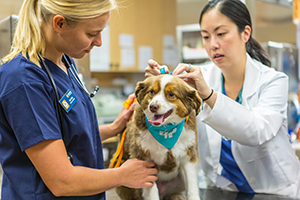
The Marlboro Man
When compiling its 2017 list of top brands, Brand Finance, a London-based valuation and strategy consultancy, said Marlboro remains Virginia’s most valuable brand. Even with strict federal regulations on marketing and advertising, Marlboro is the most valuable tobacco brand in the world, according to the consultancy.
Asked about Marlboro’s dominance, Anne Bahr Thompson, a managing director of strategy in Brand Finance’s New York office, says declining demand for cigarettes in Western markets is offset by growth in other parts of the world, such as China, Indonesia and Africa, “where regulation remains weaker.
“Like some other well-known tobacco brands, Marlboro may be able to rely on long-standing iconic heritage and familiarity among consumers to mitigate the effects of plain packaging. This will provide a significant competitive advantage over smaller, unknown tobacco brands who will struggle to penetrate new markets,” Thompson says in an email.
Henrico County-based Altria Group, the parent company of Philip Morris USA, won’t comment on outside estimates. However, spokesman George Parman confirms that Marlboro has been the leading U.S. cigarette brand for more than 40 years and is the retail share leader in all 50 states, with about $34 billion in sales in 2016.
Today, the image of a cigarette-smoking cowboy astride a horse will forever be associated with Marlboro’s tough guy image. Ironically, Marlboro was originally marketed as a women’s cigarette. The cigarette was advertised as being as “Mild as May” until 1954 when Philip Morris decided to reposition the product for broader appeal.
The company hired Leo Burnett, a Chicago advertising executive, for the rebranding. The Marlboro campaign was conceived as a way to popularize filtered cigarettes, which until 1954 had been marketed only to women. What better way to counter a feminine image than with commercials of cowboys herding horses, men in Army fatigues or bikers riding Harleys?
The Marlboro Man campaign went national in 1955 and continued in the U.S. until about 1999, when a master settlement agreement between major tobacco companies and 46 states put stringent restrictions on cigarette advertising, due to health issues associated with smoking, especially lung cancer.
Asked about the brand’s continuing growth, Parman responds, “First and foremost to brand success is our approach to responsibly growing market share. Our companies’ products are meant for adults, and society expects us to market them responsibly.”
Secondly, he said the company strives to build relationships with adult smokers. “One way we connect with adult smokers is through one-to-one engagement on our branded websites,” where adults must be 21 to enter. “From there adult smokers can engage with our branded content, experience special offers and more.”
Philip Morris USA doesn’t use the Marlboro brand on any tobacco products except cigarettes.
Keeping your promise
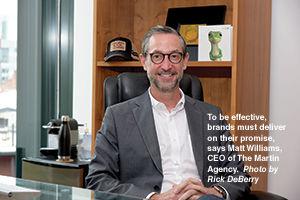
Just look at what happened recently to the Chipotle Mexican restaurant chain and United Airlines. In both cases, say experts, their brand promises took deep hits when, through social media, consumers saw rodents on the floor of a Chipotle restaurant in Dallas and witnessed a 69-year-old passenger being dragged off an overbooked United flight.
“Great brands need to be as consistent as they can, not just in their messages, but in their experiences,” says Kelly O’Keefe, a professor of brand management at VCU.
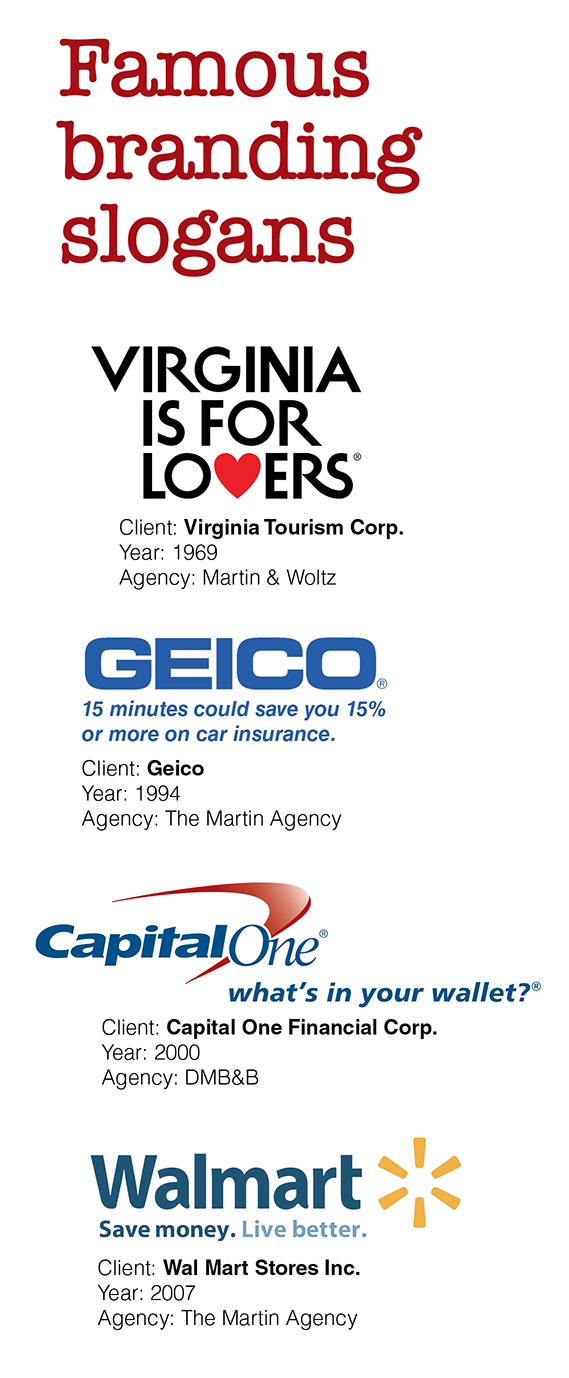
Brands can recover from disaster if companies respond appropriately. Williams points to the classic textbook case of the Tylenol poisoning murders in 1982. Seven people died as the result of drug tampering, with some of Tylenol’s acetaminophen capsules tainted with potassium cyanide. Johnson & Johnson, Tylenol’s manufacturer, spent millions pulling all its product off the shelves and said, “We’re going to do what needs to be done to make sure you and your family are safe,” recalls Williams. The incident later led to reforms in packaging of over-the-counter medications, such as tamper-proof seals.
One reason the long-running Geico campaign has been so successful, Williams continues, is because the company remained true to its brand promise. The firm, which began under the name of the Government Employees Insurance Co., has a “direct” insurance model, which helps to lower prices. Customers can call the company directly 24 hours a day, 365 days a year, for help and information.
As the company has grown, Geico has added a few agents, but overall the model remains the same.
Helping to deliver the message of lower insurance prices is the Geico Gecko, a green lizard with a British accent and a penchant for humor who shows up in all kinds of places.
When the Martin Agency started with Geico in 1994, the company ranked eighth in the industry among auto insurers. “Now it’s No. 2, with State Farm the only one ahead of them now. [They have]been the fastest-growing car insurance company for 12 years running,” says Dean Jarrett, Martin’s chief of communications.
Social media
Today, perhaps more than ever before, companies have a chance to engage with customers in real time through digital platforms. Yet the digital age “raises the stakes,” says Williams. When news blows up on social media platforms such as Facebook and Twitter, companies would be advised to behave in a way ”that consumers are saying good things about you, because, if you don’t, they’re going to say bad things about you, and millions and millions and millions of people are going to hear it.”
At the very least, adds Williams, “You have to understand how people talk about your brand on social media. It’s a great source of consumer insight, because consumers are going to be giving you completely honest, real-time feedback about your product. “
Kevin Rothermel, a professor of strategy at the VCU Brand Center, says that with modern brands like Apple — the No. 1 brand in the world according to Forbes — branding emanates from a company’s core. “You will feel who the company is through how they behave and how it feels to interact with them.”
This is true of Apple, he says, through its products, manufacturing, packaging and distribution.
Before the digital age, brands typically would be bolted on to the product after the fact. “It was almost the reverse of how great brands work now,” observes Rothermel.

In the midst of the digital shift, advertising and marketing agencies are getting more innovative. For instance, during a 34-minute power blackout during the 2013 Super Bowl, the creative team behind Oreo cookies tweeted, “You can still dunk in the dark.” The tweet packed more of a punch than Oreo’s actual Superbowl ad. The original Twitter message was retweeted 10,000 times in one hour.
“A light bulb went on for all of us when that happened,” says Jarrett. Now, before big events, some of Martin’s clients have extra content ready to go. “When we start putting stuff into the marketplace, if we need to adjust based on how things are trending … which hashtags are trending, we can make changes and additions on the spot — with the client approving, not approving — as we make edits as it’s happening.”
The Martin Agency also has won awards for its use of pre-roll ads — those ads that pop up on the Internet before people can get to the content they searched for.
Many people hit the skip button to avoid such ads, but Martin did an “unskippable” pre-roll ad campaign for Geico, and tried to turn this premise on its head by making the ads so memorable and humorous that people didn’t want to skip them.
Brand equity
The ultimate goal for any brand is what’s known as brand equity. “Brand equity is the magical thing that happens when someone says ‘give me a Coke,’ when they mean any sort of soda, or ‘give me a Kleenex’ — when they actually substitute the brand name for a product or service,” says David Saunders, founder and president of Madison+ Main, a branding, marketing and public relations agency in Richmond.
Another example? “I’m going to Google it. When that happens, you hit the top of the mountain.”
Saunders, whose company works with emerging, small and medium-size businesses, says there are basically three kinds of brands: “brands you know and love, brands you know and don’t love, and brands you never heard of.”
Still, with all the change, Williams says the essence of a brand hasn’t changed. “A good brand is still a set of images and associations attached to a company or product that appeal in a unique way to the people they want to appeal to.” Yet, how brands live in today’s world, he adds, is completely different, because there are so many consumer touch points via tablets, smartphones, social media and apps.
As VCU’s Rothermel sees it, “It’s really become the Wild West again. Now there’s an opportunity to do something amazing and interesting with the different technologies that no one has ever seen before.”
l

